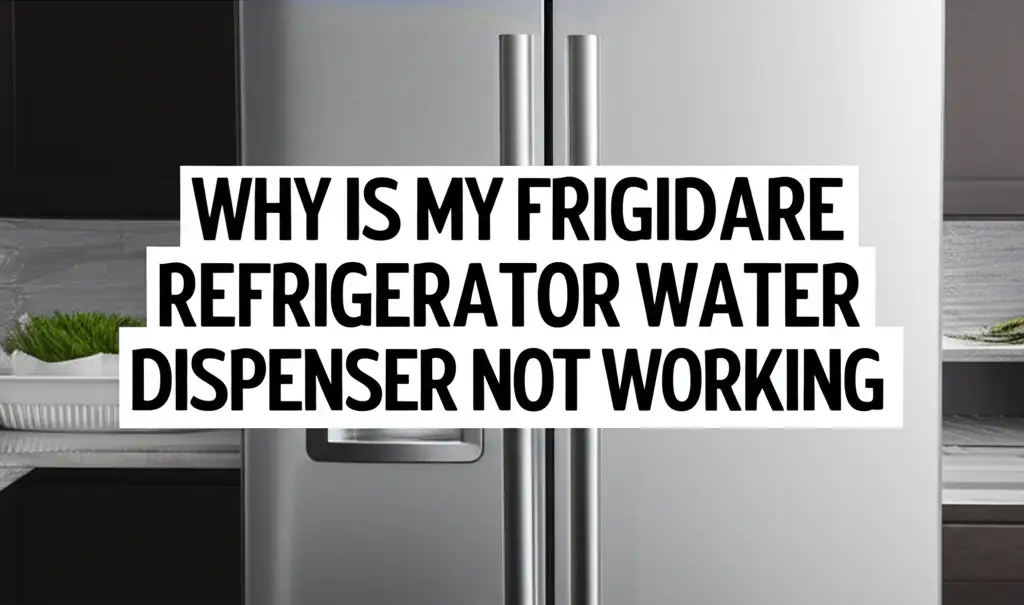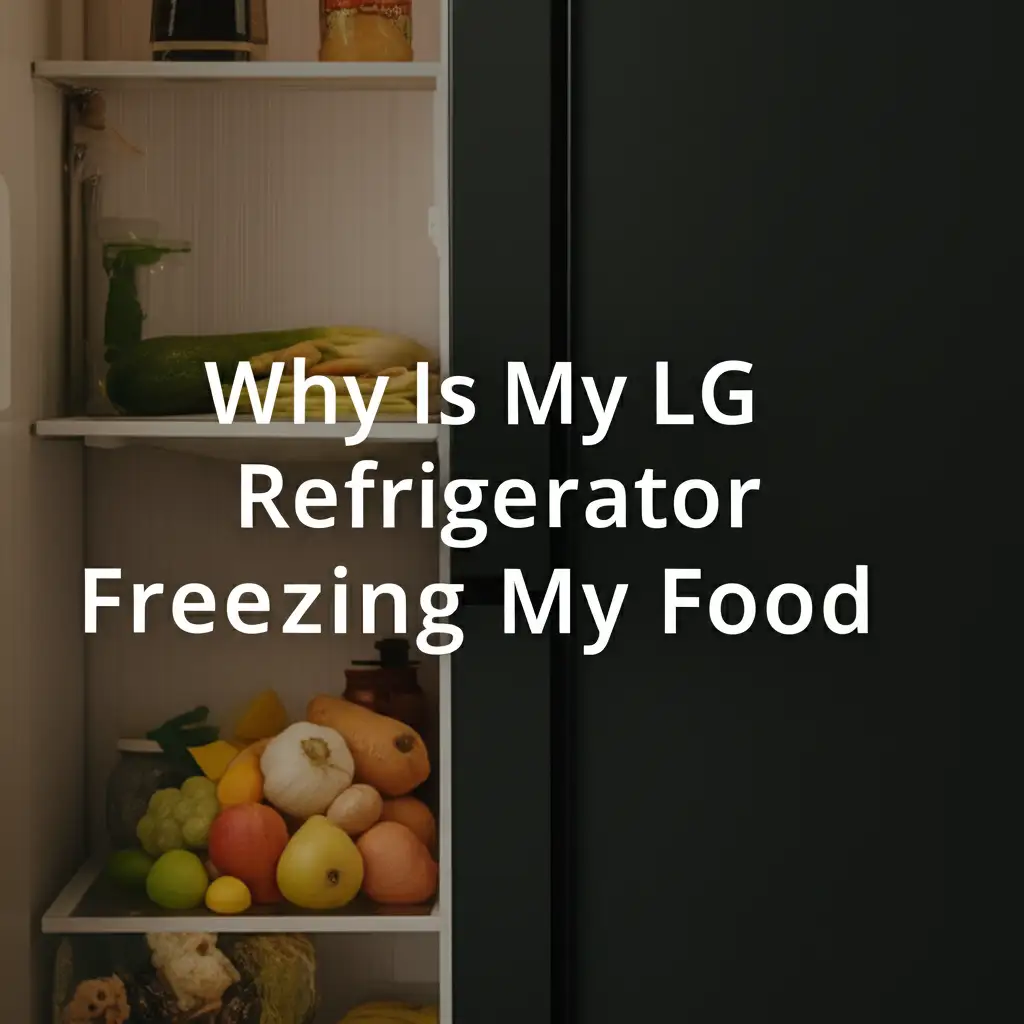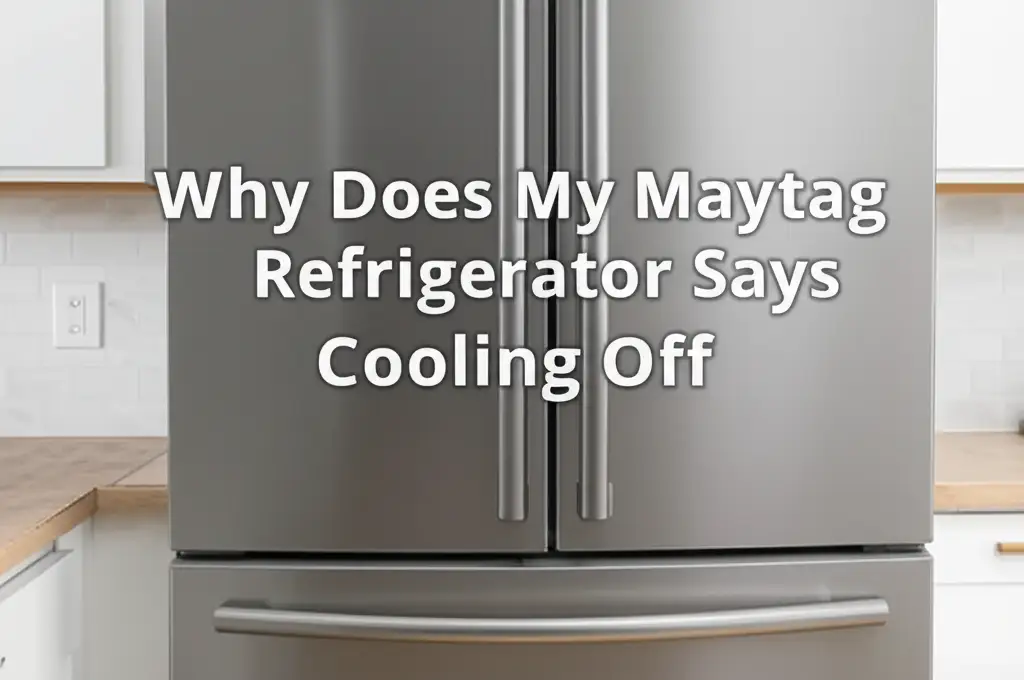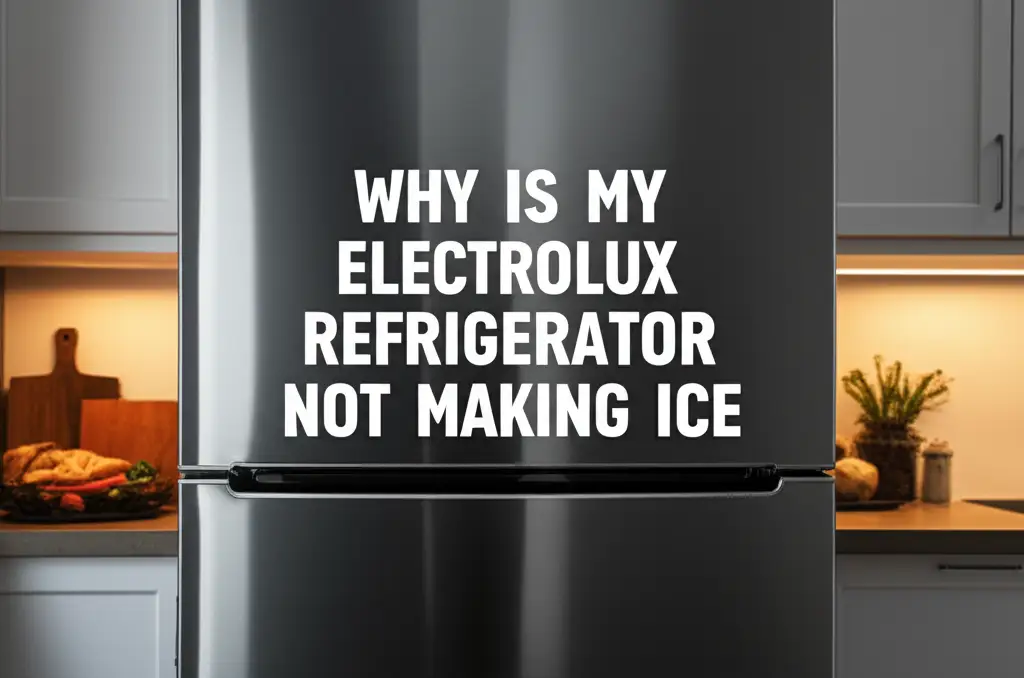· Katria Melrose · Appliance Troubleshooting · 14 min read
Why Is My Whirlpool Refrigerator Water Dispenser So Slow
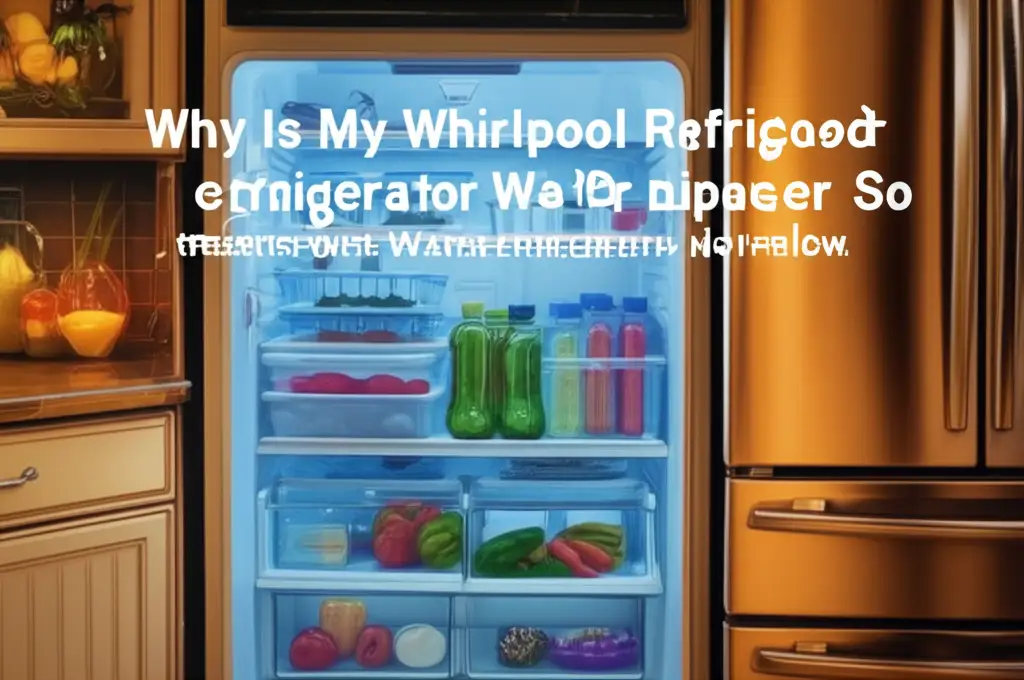
Slow Whirlpool Water Dispenser? Fix Your Refrigerator Flow
Have you ever stood at your Whirlpool refrigerator, glass in hand, waiting impatiently for water to trickle out? You are not alone. A slow water dispenser on a Whirlpool refrigerator is a common issue. It frustrates many users. This problem interrupts your daily routine. It affects your ability to get fresh, filtered water quickly.
Understanding why your Whirlpool refrigerator water dispenser is so slow helps you fix it. This article explores the common reasons behind this slow flow. We discuss issues from clogged filters to frozen lines. We also provide clear, actionable steps. These steps help you diagnose and resolve the problem. You can restore your water dispenser’s strong flow.
Takeaway
- Check your water filter first. It is the most common cause of slow water flow.
- Verify household water pressure. Low pressure affects the dispenser.
- Inspect water lines for kinks or ice. These block water movement.
- Examine the inlet valve and dispenser nozzle. They can malfunction or clog.
- Bleed air from the system after maintenance. Air causes sputtering and slow flow.
Your Whirlpool refrigerator water dispenser is slow usually due to a clogged water filter, low household water pressure, a frozen water line, a faulty water inlet valve, or air trapped in the system. Addressing these specific components often resolves the issue.
The Clogged Water Filter: A Common Culprit
A clogged water filter is the most frequent reason why your Whirlpool refrigerator water dispenser is so slow. Water filters remove impurities from your drinking water. Over time, these filters collect sediment and particles. This buildup restricts water flow. It acts like a dam, slowing down the water path.
Whirlpool recommends changing your water filter every six months. This timeframe ensures optimal performance. It also maintains water quality. If you have not changed your filter recently, it is a good first step. A new filter often resolves the slow flow problem immediately. Ignoring filter changes can also lead to other issues. For example, your Whirlpool refrigerator might start leaking water from the ice dispenser if the system is under strain.
How to Check and Replace Your Water Filter
Checking your water filter is a simple process. First, locate the filter in your refrigerator. Whirlpool filters are usually inside the refrigerator compartment or in the base grille. Refer to your appliance manual for its exact location. Once found, remove the old filter.
Run water through the dispenser without the filter installed. If the water flow improves significantly, the filter was the problem. You can temporarily use your Whirlpool refrigerator without the water filter to confirm this diagnosis. Purchase a genuine Whirlpool replacement filter. Install the new filter according to the instructions. Flush the system by dispensing several gallons of water. This removes air from the lines. It ensures the new filter is ready for use.
Low Household Water Pressure: An External Factor
Your Whirlpool refrigerator needs sufficient water pressure to dispense water effectively. If the overall water pressure in your home is low, your refrigerator’s dispenser will also suffer. This issue affects all water outlets in your house. You might notice slow flow from other faucets too. Low water pressure is an external factor. It is not a problem with the refrigerator itself.
Several factors can cause low household water pressure. A partially closed shut-off valve is one reason. This valve controls water supply to your house or refrigerator. Old plumbing or pipe issues also cause low pressure. A professional plumber can measure your home’s water pressure. They can also identify widespread plumbing problems.
Checking Water Pressure to Your Refrigerator
You can perform a simple check. Find the water shut-off valve for your refrigerator. It is often behind the unit or under the sink. Ensure this valve is fully open. A partially closed valve restricts water flow. This leads to a slow dispenser.
Next, observe other faucets in your home. Turn on a kitchen or bathroom faucet. Check its water flow. If these faucets also have weak flow, your general household water pressure is low. If only the refrigerator dispenser is slow, the problem is likely internal to the appliance. Sometimes, issues like a GE refrigerator water dispenser not working after replacing filter or a KitchenAid refrigerator water dispenser not working after replacing filter can point to pressure problems or air in the lines, not just the filter. A similar issue can affect Maytag models, where a Maytag refrigerator water dispenser is not working after replacing filter. These issues share common diagnostic steps related to water supply.
Frozen Water Line: Ice Blockages
A frozen water line can drastically slow or stop water flow. This problem is common in refrigerators located in cold environments. It also happens if the freezer temperature is too low. The small water line that goes to the dispenser can freeze. Ice forms inside the tube. This ice acts as a blockage. It prevents water from reaching the dispenser nozzle.
The water line usually freezes in the refrigerator door. This area is exposed to colder air. It is also a thin line, making it susceptible to freezing. If your refrigerator door is opened frequently, or if the dispenser is not used often, freezing can occur. A kink in the line can also make freezing more likely in that specific spot.
How to Thaw a Frozen Water Line
Thawing a frozen water line requires patience. First, disconnect power to the refrigerator. This step ensures safety. It also allows the freezer to warm slightly. Open the freezer and refrigerator doors. Leave them open for several hours. This allows the ice to melt naturally. You can also use a hairdryer on a low setting. Direct the warm air at the water line in the door. Be careful not to overheat the plastic components.
Once thawed, test the dispenser. If water flows normally, freezing was the issue. Consider adjusting your freezer temperature slightly warmer. This prevents future freezing. Make sure to keep the temperature below 0°F (-18°C) for food safety. Also, check for kinks in the water line behind the refrigerator. A bent line can impede flow and encourage freezing.
Faulty Water Inlet Valve: Not Opening Properly
The water inlet valve controls water entry into your refrigerator. This valve is an electrical component. It opens when you press the dispenser lever. It allows water to flow from your home’s water supply into the refrigerator. If this valve is faulty, it may not open fully. This partial opening restricts water flow. The result is a slow water dispenser.
A faulty valve can also manifest in other ways. You might hear a buzzing sound when dispensing water. This sound indicates the valve is trying to open but struggles. Mineral deposits or sediment can clog the valve. Electrical issues can also prevent it from working correctly.
Diagnosing and Addressing an Inlet Valve Issue
First, disconnect power from your refrigerator. Locate the water inlet valve. It is usually at the back of the refrigerator, near the water supply line. Check for visible signs of damage or mineral buildup. Sometimes, simply cleaning the valve area helps.
If the valve appears to be malfunctioning, it usually requires replacement. This repair is more complex. It often needs a professional technician. Replacing the valve involves disconnecting water lines and electrical wires. If your Whirlpool refrigerator is not dispensing water or ice at all, a completely failed inlet valve is a strong possibility. Understanding why your Whirlpool refrigerator is not dispensing water or ice can help identify if the valve is the core problem.
Clogged Dispenser Nozzle or Tube: Localized Blockages
Even if water flows well into the refrigerator, it might slow down at the very end. The dispenser nozzle or the small tube leading to it can become clogged. Mineral deposits from hard water are a common culprit. Over time, these minerals build up inside the nozzle. They restrict the water exit point. Mold or slime can also accumulate. This buildup reduces the opening size.
Sometimes, small food particles or debris can get into the nozzle. This happens if the dispenser area is not cleaned regularly. A clogged nozzle is a localized problem. It only affects the dispenser’s output. The rest of the water system within the refrigerator might be fine.
Cleaning the Dispenser Nozzle and Tube
Cleaning the dispenser nozzle is a simple task. First, turn off the water supply to the refrigerator. This prevents accidental leaks. Then, locate the dispenser nozzle. It is the small opening where water comes out. Use a small brush or a toothpick to clear any visible debris. A soft cloth dampened with vinegar can help remove mineral deposits.
For deeper cleaning, you might need to remove the dispenser housing. Refer to your Whirlpool refrigerator manual for specific instructions. Some parts might be removable for better access. Regularly cleaning your dispenser prevents future clogs. You can find more general tips on how to clean a water dispenser or specifically how to clean a water dispenser on a fridge to maintain good flow. Pay attention to any signs of mold, as learning how to clean refrigerator water dispenser mold is important for health and flow.
Kinked Water Line: A Simple Obstruction
A kinked water line is a straightforward reason for slow water flow. The plastic water line runs from your home’s water supply to the refrigerator. It then continues to the water filter and the dispenser. If this line gets bent or pinched, water cannot flow freely. This creates a bottleneck. The water stream becomes weak.
Kinks often occur behind the refrigerator. When you move the appliance for cleaning or maintenance, the line can get pushed or squashed. Kinks can also happen inside the refrigerator compartment. This happens if the line is not properly routed. Always check the entire length of the water supply line.
Inspecting and Straightening the Water Line
Pull your refrigerator away from the wall. This gives you access to the back of the unit. Carefully inspect the water supply line. Look for any sharp bends or kinks. Straighten any kinks you find. Ensure the line has enough slack. This prevents new kinks when the refrigerator is pushed back.
If the line is severely kinked or damaged, replacement is necessary. A damaged line can lead to leaks. Leaks cause bigger problems, such as water in the bottom of your Whirlpool refrigerator. It can also cause leaks from the Whirlpool side-by-side refrigerator from the bottom. Check the entire length of the line. Replace any section that shows cracks or persistent kinking.
Air in the Water Line: Post-Maintenance Issues
Air trapped in the water line causes sputtering and slow water flow. This issue typically occurs after certain maintenance tasks. For example, replacing the water filter introduces air into the system. Disconnecting the water supply line also lets air in. Air pockets block water from moving smoothly. They create resistance in the line.
When you dispense water, you might hear gurgling sounds. The water might come out in spurts. It indicates air is mixed with the water. This air needs to be purged from the system. Purging is a simple process. It restores steady water flow.
Purging Air from the Water System
After any service involving the water lines or filter, purge the air. Place a large container under the water dispenser. Dispense water continuously for 3-5 minutes. This allows air to escape. You will notice the water flow become steadier. The gurgling sounds will stop.
It is normal for the first few glasses of water to be cloudy or to have air bubbles. This cloudiness is due to trapped air. It clears up after flushing the system. Continue dispensing water until the flow is consistent. This step is crucial after changing your water filter. It ensures proper operation.
Other Less Common Causes and What to Consider
While the issues above are most common, other factors can contribute to a slow Whirlpool refrigerator water dispenser. These are less frequent but still possible. Understanding them helps in thorough troubleshooting.
Sediment in Water Tank or Reservoir
Some Whirlpool refrigerators have an internal water tank or reservoir. This tank stores chilled water. Sediment can settle at the bottom of this tank over time. This buildup can restrict water flow out of the tank. It makes the dispenser slow. Cleaning this tank is generally a more involved process. It might require disassembling parts of the refrigerator.
Faulty Dispenser Switch or Lever
The dispenser switch or lever activates the water flow. If this component is worn or damaged, it might not fully engage the water inlet valve. A partial engagement leads to weak water pressure at the nozzle. You might hear the switch click, but it does not send a strong enough signal. This issue typically requires professional diagnosis and repair.
Water Line Damage
Beyond simple kinks, the water line can suffer internal damage. A small puncture or crack, not immediately visible, can affect pressure. If the line is old, it might degrade internally. This degradation can restrict flow. In such cases, replacing the entire section of the water line is the best solution. Always use food-grade water lines for refrigerators.
Compressor Issues Affecting Cooling
While less direct, problems with the compressor or cooling system can indirectly affect water flow. If the refrigerator struggles to maintain consistent temperatures, it might lead to freezing issues in the water line. A struggling compressor might cause the refrigerator to work harder. This can lead to other symptoms, like the Whirlpool refrigerator turning on and off frequently. Ensure your refrigerator’s cooling is consistent.
Professional Help: When to Call a Technician
Most slow water dispenser issues are fixable by the homeowner. You can usually identify and resolve them with simple steps. However, some problems require professional expertise. If you have tried all common troubleshooting steps and the water flow remains slow, it is time to call a qualified appliance technician.
Complex repairs include replacing the water inlet valve, diagnosing electrical issues, or disassembling internal components. A technician has the right tools and knowledge. They can safely diagnose complex problems. They can also perform necessary repairs. Do not attempt repairs that involve refrigerant or sealed systems. These systems require specialized training and equipment. Calling a professional ensures your appliance is repaired safely and correctly. It saves you from potential damage or injury.
Frequently Asked Questions
How often should I change my Whirlpool refrigerator water filter?
You should change your Whirlpool refrigerator water filter every six months. This regular change ensures optimal water quality. It also maintains good water flow from your dispenser. If your household has hard water, or if you use the dispenser frequently, you might need to change it more often.
Can a refrigerator water dispenser work without a filter?
Yes, a refrigerator water dispenser can work without a filter. Removing the filter usually allows water to flow through a bypass. This can help diagnose if a clogged filter is causing slow flow. However, water dispensed without a filter will not be filtered for impurities.
Why does my Whirlpool dispenser make a loud noise when I use it?
A loud noise, often a buzzing or vibrating sound, from your Whirlpool dispenser usually indicates an issue with the water inlet valve. The valve might be struggling to open fully. Mineral buildup or internal damage can cause this. Sometimes, air in the lines also causes noise.
How do I know if my water line is frozen?
Symptoms of a frozen water line include no water at all, or only a few drops coming out. The ice maker might also stop producing ice. You may hear the dispenser motor running but no water flows. Inspect the water line visible in the freezer door area for visible ice.
What happens if I do not change my refrigerator water filter?
If you do not change your refrigerator water filter regularly, several issues can arise. Water flow will become slow or stop completely. The filter will stop effectively removing impurities. This can lead to poor-tasting or smelling water. It might also put strain on the refrigerator’s water system.
Can low water pressure damage my refrigerator?
Low water pressure typically does not damage your refrigerator. However, insufficient pressure prevents the water inlet valve from opening fully. This means the dispenser will not provide proper water flow. It might also affect the ice maker’s performance. It will not cause direct damage to the appliance’s internal components.
Conclusion
A slow Whirlpool refrigerator water dispenser is an irritating problem. However, it usually has a simple fix. Most issues relate to common components. Start your troubleshooting with the easiest checks. Examine your water filter first. Confirm it is not clogged. Then, check your household water pressure. Look for any kinks in the water line behind the refrigerator. Do not forget to inspect the dispenser nozzle itself.
Many common issues can be resolved with basic tools and a bit of patience. If your Whirlpool refrigerator water dispenser is still slow after these checks, consider the more complex possibilities. These include a faulty water inlet valve or internal line issues. For these, professional help is the best path. You can restore your water dispenser’s steady flow. Enjoy fresh, clean water at a consistent rate.


